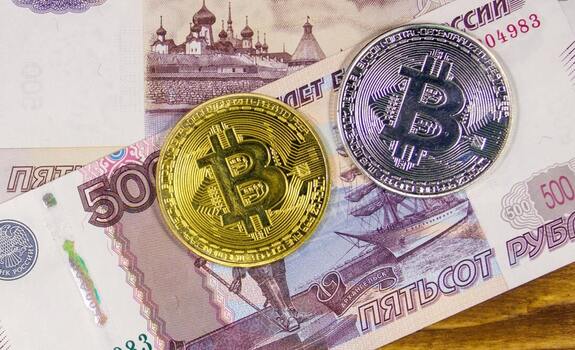The Digital Ruble Launch: What to Expect for Russians in 2025
The digital ruble is a new electronic equivalent of cash rubles, issued by the Bank of Russia and stored in a user's digital wallet. Unlike cashless transfers via banks, Central Bank Digital Currency (CBDC) allows for instantaneous and inexpensive transactions directly between network participants, maintaining the Central Bank's control over issuance and incorporating Distributed Ledger Technology (DLT) for reliability, transparency, and effective monetary supply management.
Fundamentals of the Digital Ruble
Nature and Purpose of CBDC
The digital ruble represents a state-backed digital currency (CBDC), combining the attributes of both cash and cashless money. With this new technology, the state gains the capacity to swiftly manage monetary supply, while citizens can conduct quick and low-cost transfers.
Wallets and Storage
Users can install a mobile wallet application or link the digital ruble to a "digital card" in their online banking. Funds in the wallet do not constitute a deposit; rather, they represent direct liabilities of the Central Bank to the holder, ensuring deposit protection.
Distinction from Existing Systems
Unlike electronic money from payment systems and bank accounts, the digital ruble operates within a unified distributed ledger without the need for an account number, thereby removing intermediaries and reducing clearing times to mere seconds.
Technological Architecture
DLT Network and Ledger Nodes
The network is built on a private Distributed Ledger Technology (DLT) with nodes operated by the Central Bank and authorized banks. Each node stores a copy of the transaction history, which ensures fault tolerance and protection against forgery.
Interfaces and API
Open APIs allow for the integration of CBDC into banking applications, payment solutions, and enterprise systems. Developers gain access to Software Development Kits (SDKs) and documentation to create services based on the digital ruble.
Smart Contracts "CBDC-Script"
The new programming language "CBDC-Script" supports conditional transfers, automates service subscriptions, and enables instant settlements between legal entities without the involvement of banks.
Integration with Terminals and NFC
Retailers will update their software to accept the digital ruble via QR codes or contactless NFC tags. The owner simply needs to bring their smartphone close to the terminal or scan the code on the receipt.
Regulation and Legal Environment
The "Digital Ruble" Law
The new federal law defines the status of CBDC, the types of permitted operations, the responsibilities of participants, and the rules for wallet servicing. The law has been registered with the State Duma and will come into force simultaneously with the launch of the network.
Regulatory Guidelines from the Bank of Russia
Regulatory decrees set technical standards for nodes, requirements for cryptography, and outline transaction timelines and the participation of payment agents.
Licensing and Supervision
Banks and fintech companies will receive a separate status as "CBDC operators", being required to comply with KYC and AML regulations, undergo annual audits of security infrastructure, and report on risks.
Economic and Monetary Implications
A Tool for Monetary Control
The digital ruble enables the Central Bank to directly influence the volume of circulation and the velocity of monetary supply, implement "targeted stimulus payments" to the population, and introduce "primary QR codes" for financial support to specific social groups.
Reduction in Transaction Costs
Interbank and instant P2P transfers in CBDC will come with minimal fixed fees or be completely free for the public, making small and frequent payments economically viable.
Reduction of the Shadow Sector
The widespread use of the digital ruble will enhance the transparency of payments, complicating informal transactions and increasing tax revenues to the budget.
Payment Scenarios and Services
Instant P2P Transfers
Transfers up to several million rubles can be made using a phone number, with no fees applied. Funds are credited instantly, making it convenient for family transfers and regular payments.
Payment for Goods and Services
Retailers and restaurant chains will accept the digital ruble through POS terminals integrated with CBDC API. This does not increase the cost of receipts and reduces customer service time.
Online Payments and E-commerce
Online retail stores will implement a unified checkout for CBDC, allowing customers to immediately see their wallet balance and complete purchases without using a card.
Payment for Government Services
Government services, fines, taxes, and fees can be paid through a personal account linked to a wallet — no details need to be entered, as the system will automatically generate the payment.
Automatic Microloans and Subscriptions
Smart contracts will provide access to instant loans secured by CBDC: decisions will be made in seconds, with terms and rates specified in the contract programming.
Security and Privacy
Multi-layer Encryption
Transactions are protected by GOST 34.12 and TLS 1.3 standards, with private keys stored in isolated modules of mobile devices or smart cards.
Anonymity for Small Payments
Transfers up to 5,000 RUB will occur without the disclosure of personal data, preserving basic privacy for purchases.
AI Monitoring and Fraud Prevention
A system based on machine learning analyses patterns and blocks suspicious operations in real-time.
Isolation of Large Amounts
For large transfers, "time-outs" and the splitting of sums into two transactions requiring additional authentication will be implemented.
Participants and Ecosystem
Bank of Russia
The issuer and regulator responsible for the reliability of the network, managing issuance, and monitoring risks.
Commercial Banks and Payment Operators
They will integrate wallets into their applications, serve as validators, and provide acquiring services.
Fintech Companies
They will develop specialized wallets, payment widgets, and smart contract solutions for businesses.
Retail Chains and Marketplaces
They will implement updated terminals and APIs to accept CBDC in both offline and online points of sale.
Government Structures
They will integrate the digital ruble into government service systems to simplify payments of fines, taxes, and social support services.
Social and User Aspects
Accessibility and Coverage
For regions with unstable internet, offline terminals and SIM managers will be provided to support one-off transactions.
Educational Programs
Government services, banks, and NGOs will conduct online courses, instructional videos, and tutorials for various age groups, including senior citizens.
Inclusive UX
Voice interfaces, large fonts, and contrasting elements will make applications accessible for people with disabilities.
Practical Recommendations
1. Installing the Wallet and KYC
Download the official application, undergo identification, and gain access to full functionality without limits on amounts.
2. Utilizing Offline Mode
For small payments (up to 5,000 RUB), activate offline mode and perform transactions without internet connectivity.
3. Integrating Business Processes
Developers should connect to the API of the Bank of Russia or the API of the chosen bank-agent for direct payments on websites or in mobile applications.
4. Setting Up Notifications
Receive push notifications about currency rate changes, policy updates, and transaction statuses.
5. Monitoring Legislative Changes
Subscribe to newsletters from the Bank of Russia and follow publications on the official portal to stay informed about important news and regulatory amendments.
Conclusion
The launch of the digital ruble in 2025 marks a significant milestone for the Russian financial system. It combines the reliability of fiat currency with the advantages of digital technologies: instant transfers, low fees, transparency, and efficient monetary control. For citizens, it offers convenient P2P transfers and government services; for businesses, it provides new transaction tools and microloans; and for the state, it serves as a powerful mechanism for economic management and combatting the shadow economy.




